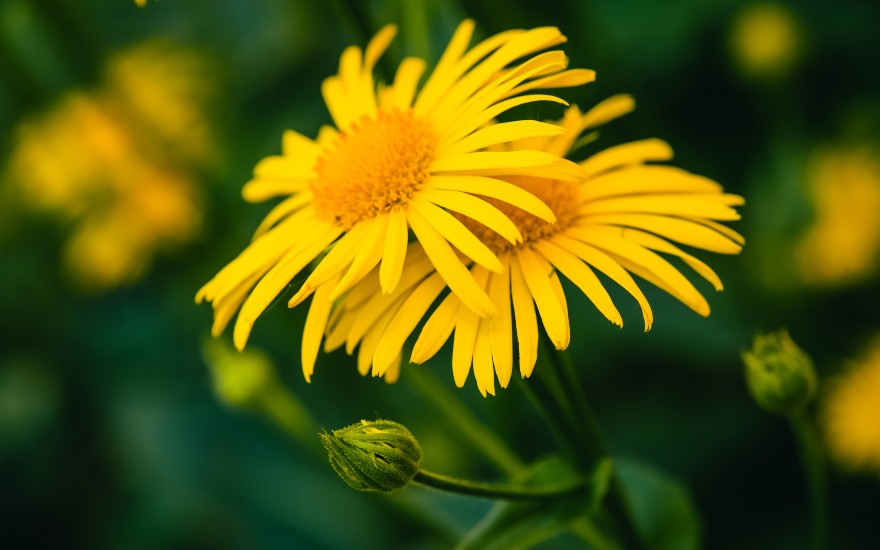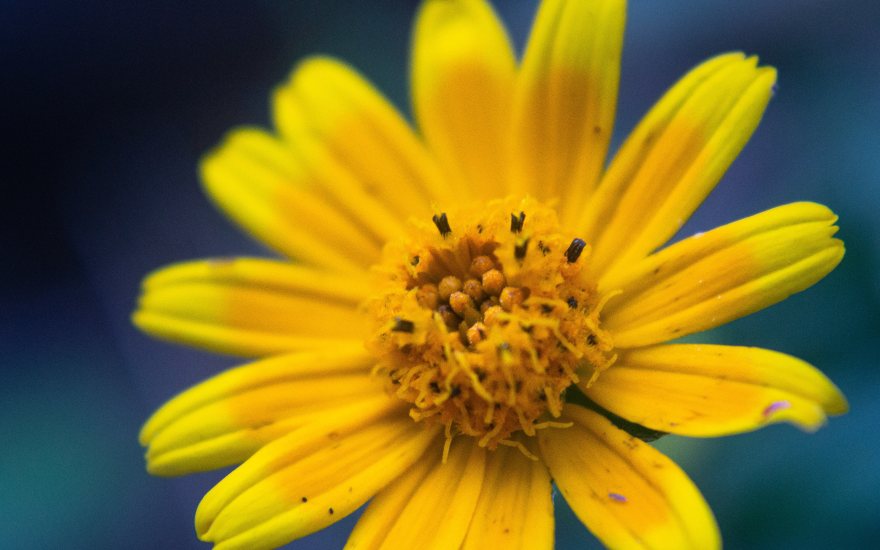We find it as an ingredient in creams, gels and oils. It has been used in homeopathic medicine for centuries, and many sportspeople use it regularly. But what is arnica and why is there so much talk about it when it comes to muscle tension and bruises?
Definition of arnica montana
Arnica (scientific name: Arnica Montana L.), is a perennial plant native to the mountains of Europe and North America and cultivated in various parts of the world.
The stem, which can reach a height of 1-2 metres, has bright green leaves and very fragrant bright yellow flowers.

But, besides being known for its beauty and scent, the arnica flower is considered to be rich in active ingredients that are beneficial to the human organism.
It is therefore no coincidence that it is widely used in the form of extracts for the production of gels, creams, oils and homeopathic remedies that many people use to ease aches and muscle tension.
Properties and benefits
The arnica plant, and especially its flower, is rich in active substances such as sesquiterpene lactones, flavonoids, essential oils and polysaccharides.
Thanks to some of these components, arnica is thought to have analgesic, anti-inflammatory, anti-oedematous, antioxidant and revulsive properties that have been investigated and confirmed by multiple in vitro and in vivo studies.
Below are details regarding the beneficial properties of arnica:
- analgesic (pain-relieving), thanks to its high concentration of sesquiterpenes. This property is mainly harnessed for topical use of the product that must be applied directly on the affected area;
- anti-inflammatory and anti-oedematous, thanks to the presence of flavonoids and helenalin, a sesquiterpene lactone capable of inhibiting the NF-kB transcription factor. This factor is involved in the inflammatory processes of the human body and various inflammatory drugs and preparations purposely act by inhibiting its production;
- antioxidant and protective of the microcirculation due to the high concentration of flavonoids. These natural substances protect and strengthen microcirculation (involving arterioles, metarterioles, capillaries and venules) and help improve lymphatic drainage;
- revulsive, i.e. capable of stimulating blood flow to the surface layers of the skin. The revulsive effect can be useful in cases of inflammation, bruising and as a decongestant.
Let’s now see in more details what arnica is used for and how to make the most of the benefits this medicinal plant provides.
What is arnica good for?
Arnica flowers, and sometimes also the rhizome and roots, produce extracts that are widely employed in cosmetics, homeopathy and veterinary medicine.
Arnica concentrations are often combined with extracts of other plants having similar properties, such as eucalyptus, devil’s claw and menthol.
Products used as a natural remedy for muscle pain, contractures, post-operative haematomas, bruises (also in children) and even insect bites are commonly developed from these extracts.
Specifically aimed at this purpose are some cosmetic products like arnica creams, ointments, oils, sprays and gels, to be applied with a massage directly on the area affected by pain, stiffness, swelling or bruising, but never on open wounds.
Authorised homeopathic remedies include a wide range of tablets, patches, granules and supplements, while the most popular animal product is arnica gel for horses, generally used to massage the muscles and joints of racehorses.
Arnica products have a very wide field of application. Here are a few examples:
- A large number of sportspeople use arnica in cream and gel form to both warm up their muscles before exercising and relax fatigued areas after exercise. The most sought-after product in these cases is arnica gel as its concentration of extracts is usually higher than in other products;
- many people use arnica-based gels, creams, oils or ointments to soothe pain in the neck, muscles, tendons and joints;
- arnica is also used in the post-operative period to help absorb swelling and ecchymosis (bruising);
- numerous professionals – in the field of physiotherapy, massage, massotherapy etc. – use arnica montana products to perform relaxing and decontracting massages on their patients.

However, never rely on the preparation of do-it-yourself remedies, especially for internal use, as ingesting this plant can have very serious side effects.
Side-effects and contraindications
When taken for internal use, improperly diluted arnica can prove toxic to the body, particularly the liver. It is therefore extremely important to only use commercially available products and avoid home-made solutions (the so-called ‘grandmother’s remedies’).
Taking homeopathic remedies based on this plant may reduce the effectiveness of anticoagulant, antithrombotic and low molecular weight heparin medications.
Furthermore, it is not recommended to use arnica products, even for topical use, if you are allergic to the plant.
Is arnica really effective?
The anti-inflammatory, analgesic, revulsive and antioxidant properties of arnica have been investigated in numerous studies, often with positive outcome when carried out on products for external use with a high concentration of extracts.
It is therefore no coincidence that so many people regularly use creams and gels based on extracts of this plant, as they consider them valuable allies in cases of muscle tension and contractures.
As much research has been carried out on homeopathic products, but with less promising results. One hypothesis is the following: as the extracts are highly diluted in these preparations (so that people can ingest them without the risk of intoxication), their effect proves extremely poor.
Even though the result of the research conducted on the properties of this plant have been proven, the effectiveness of arnica may depend on its concentration in the product.
Sources:
Smith AG, Miles VN, Holmes DT, Chen X, Lei W. Clinical Trials, Potential Mechanisms, and Adverse Effects of Arnica as an Adjunct Medication for Pain Management. Medicines (Basel). 2021 Oct 9;8(10):58. doi: 10.3390/medicines8100058. PMID: 34677487; PMCID: PMC8537440
Kriplani P, Guarve K, Baghael US. Arnica montana L. – a plant of healing: review. J Pharm Pharmacol. 2017 Aug;69(8):925-945. doi: 10.1111/jphp.12724. Epub 2017 Apr 11. PMID: 28401567
Ekenäs C, Zebrowska A, Schuler B, Vrede T, Andreasen K, Backlund A, Merfort I, Bohlin L. Screening for anti-inflammatory activity of 12 Arnica (Asteraceae) species assessed by inhibition of NF-kappaB and release of human neutrophil elastase. Planta Med. 2008 Dec;74(15):1789-94. doi: 10.1055/s-0028-1088320. Epub 2008 Oct 30. PMID: 18975264
Disclaimer: The information provided in this article represents general indications and in no way replaces medical advice.



